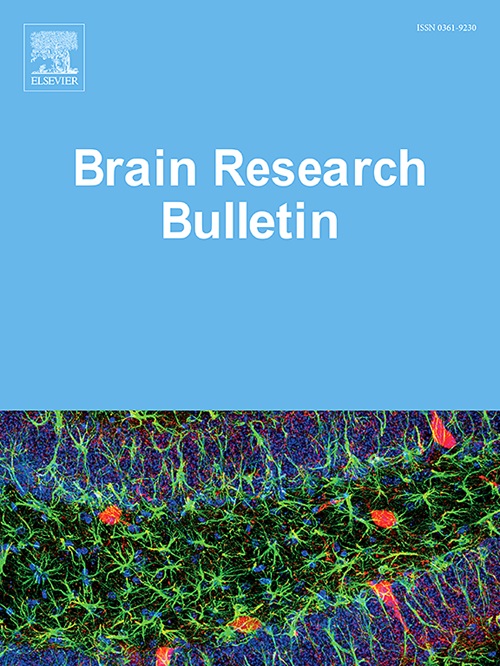探索和验证帕金森病诊断的关键遗传生物标志物。
IF 3.5
3区 医学
Q2 NEUROSCIENCES
引用次数: 0
摘要
背景:帕金森病(PD)是一种具有复杂遗传基础的神经系统疾病,其可靠的诊断仍然有限。目的:鉴定帕金森病的关键基因并评估其作为诊断标志物的潜力。方法:从PD组织数据集和血液数据集中筛选差异表达基因(DEGs)。使用两种机器学习方法来识别关键的pd相关基因。这些基因在一个独立的数据集中得到了验证。使用PD患者的120个外周血单个核细胞(PBMCs)进一步验证。确定这些基因的临床意义和诊断价值。通过细胞实验对基因的功能进行了分析和验证。结果:PD组织数据集和血液数据集共鉴定出13个共同的上调基因。两种机器学习方法确定了三个关键的pd相关基因(GPX2, CR1, ZNF556)。独立数据集和PBMCs样本结果显示PD患者中表达增加。临床分析显示GPX2和CR1表达与早期PD相关。经验证的血液样本数据集显示,每三个基因都具有中等程度的PD诊断潜力,联合分析优于单个基因分析(AUC:0.701)。各基因的诊断价值相近,且3个基因联合使用的诊断价值较好(AUC:0.801)。功能研究强调了这些基因参与PD病理的关键通路。SH-SY5Y细胞实验结果显示,PD细胞模型中这3个基因均有所增加。结论:GPX2、CR1、ZNF556在PD的发生发展中起关键作用,可作为PD的诊断标志物。本文章由计算机程序翻译,如有差异,请以英文原文为准。
Exploring and validating key genetic biomarkers for diagnosis of Parkinson's disease
Background
Parkinson's disease (PD) is a neurological condition characterized by complex genetic basic, and the reliable diagnosis of PD remained limited.
Objective
To identify genes crucial to PD and assess their potential as diagnostic markers.
Methods
Differentially expressed genes (DEGs) were screened from the PD tissue dataset and blood dataset. Two machine learning methods were used to identify key PD-related genes. The genes were validated in an independent dataset. Further validation using 120 peripheral blood mononuclear cells (PBMCs) from PD patients. The clinical significance and the diagnostic value of the genes was determined. The function of genes was analyzed and verified by cells experiments.
Results
Thirteen common upregulated genes were identified between PD tissue dataset and blood dataset. Two machine learning methods identify three key PD-related genes (GPX2, CR1, ZNF556). An independent dataset and PBMCs samples results showed increased expression in PD patients. Clinical analysis showed that GPX2 and CR1 expression correlated with early-stage PD. The validated dataset of blood samples revealed each three gene showed moderate diagnostic potential for PD, with combined analysis outperforming individual gene analysis (AUC:0.701). The PBMCs samples showed similar diagnostic value of each gene, and the combination of the three genes presented better diagnostic value (AUC:0.801). Functional studies highlighted the involvement of these genes in key pathways in PD pathology. The results of SH-SY5Y cells showed that these three genes increased from PD cell model.
Conclusions
GPX2, CR1, ZNF556 were critical to the development of PD and might serve as diagnostic markers for PD.
求助全文
通过发布文献求助,成功后即可免费获取论文全文。
去求助
来源期刊

Brain Research Bulletin
医学-神经科学
CiteScore
6.90
自引率
2.60%
发文量
253
审稿时长
67 days
期刊介绍:
The Brain Research Bulletin (BRB) aims to publish novel work that advances our knowledge of molecular and cellular mechanisms that underlie neural network properties associated with behavior, cognition and other brain functions during neurodevelopment and in the adult. Although clinical research is out of the Journal''s scope, the BRB also aims to publish translation research that provides insight into biological mechanisms and processes associated with neurodegeneration mechanisms, neurological diseases and neuropsychiatric disorders. The Journal is especially interested in research using novel methodologies, such as optogenetics, multielectrode array recordings and life imaging in wild-type and genetically-modified animal models, with the goal to advance our understanding of how neurons, glia and networks function in vivo.
 求助内容:
求助内容: 应助结果提醒方式:
应助结果提醒方式:


